Remember that text-heavy onboarding guide you created? Chances are half your team hasn’t even read it yet.
But you can’t blame them, can you? After all, who has the time (and the attention span) to sift through a boring and technical document?
The workplace is evolving and that calls for a change in workplace communication too. What’s more, with many companies working remotely, there's a dire need to simplify information as much as possible.
How do you get your team to take note, pay attention, and understand the information you share? By applying visual communication in the workplace, both in-person and in video meetings.
Communicating with the right use of visuals helps you:
- Communicate complex information
- Tell a story
- Engage your audience
- Inspire action
Let’s take a look at five types of visuals you can use in your day-to-day work to communicate better with your team.
1. Map out processes with flowcharts
Whether you’re taking your team through a customer journey, sharing marketing campaigns, or explaining an internal process, communicating processes aren’t always simple.
You might come across drawn-out ones that involve several steps, making it difficult to summarize them in words alone. The key lies in breaking down every step in a manner that's easy to understand and grasp.
In such situations, the best way to communicate is to map out those processes using flowcharts.
A flowchart helps you break down the steps of a process and visualize them. This streamlines communication and ensures every team member is on the same page.
Here are some ways to use flowcharts:
- Break down your marketing budget into smaller categories to get a better understanding of marketing spends
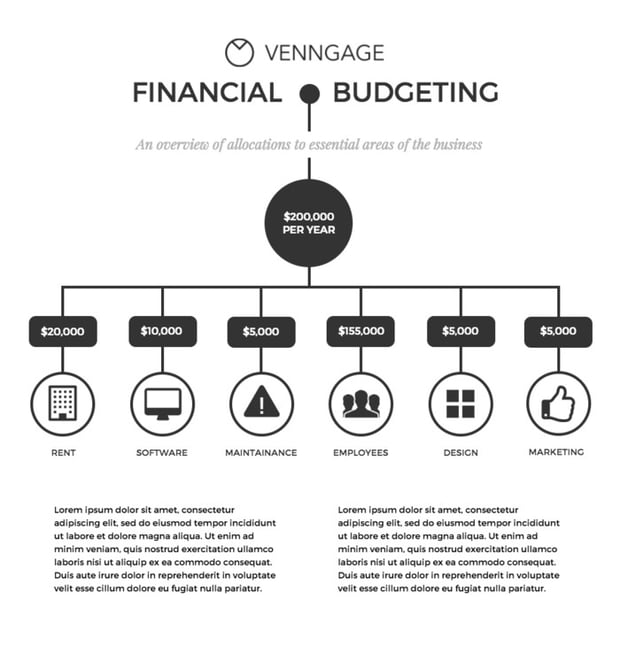
Source: Venngage
- Explain your team or organization structure while showing hierarchy and team relationships
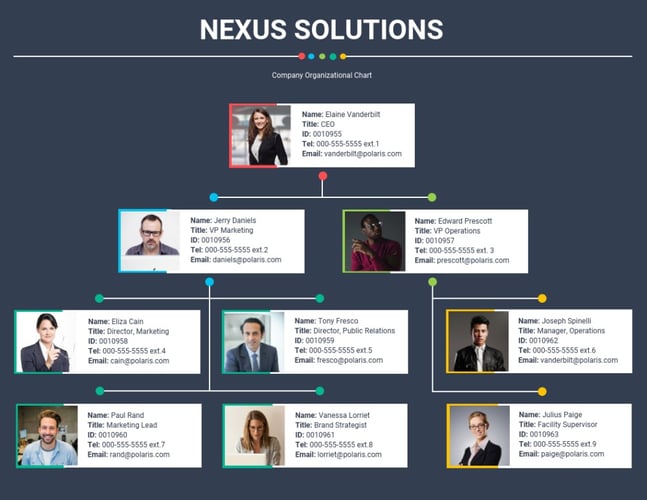
Source: Venngage
- Map out the different stages of a project to keep the team aligned and track progress
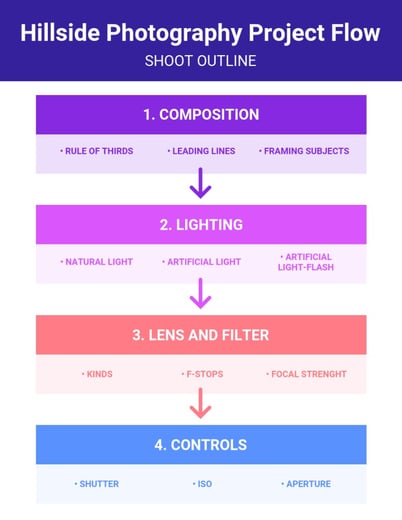
Source: Venngage
- Plan and implement experiments, helping you understand if they’re worth running

Source: Venngage
2. Create roadmaps to communicate high-level strategy
You have a business strategy in place but what are you doing to ensure your team is aware of it and most importantly, understands it?
“Strategy-specific messages linked to your purpose become tools to help employees connect their day-to-day efforts with the aspiration of the company,” according to Harvard Business Review, reinforcing the importance of strategic communication.
A problem with strategic communication is that it tends to be complex and layered, leaving ample room for miscommunication.
One of the most effective ways to avoid that is by creating a roadmap to communicate high-level goals. This makes the information easier to understand and makes it more memorable, while keeping readers engaged.
The idea behind using roadmaps is to highlight high-level concepts or goals so that they serve as a guide for everyone in the team to plan their respective tasks and execute on the strategy.
Here’s an example of a roadmap that clearly summarizes the strategy recommendations and uses different colors to distinguish the various categories.
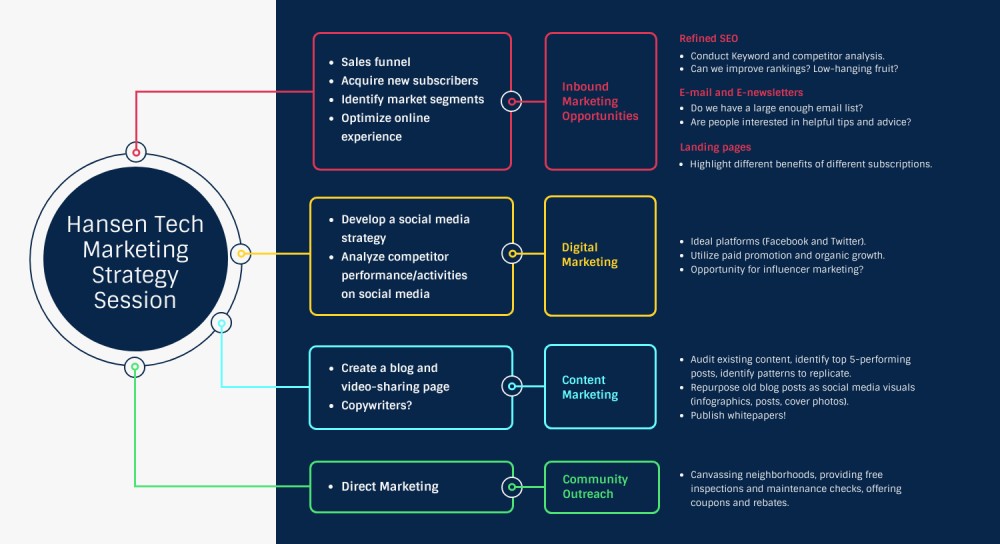
Source: Venngage
3. Use timelines to organize projects
Time management is key to project success. This becomes even more important when you’re juggling multiple projects at once or managing a distributed workforce.
A lot depends on how leaders communicate project timelines and deliverables to their team. Poor communication may lead to project lapses and missed deadlines.
Creating a timeline can help you avoid such a scenario. This visual tool helps you organize projects, visualize deadlines, and keep the team on track.
You can use symbols, icons, and color-coded data to categorize the different types of tasks, making it easy to scan and grasp.
Here’s an example of a project management timeline. Notice how it uses red and blue to differentiate between the different activities. This makes them stand out from each other on the timeline, while improving readability.
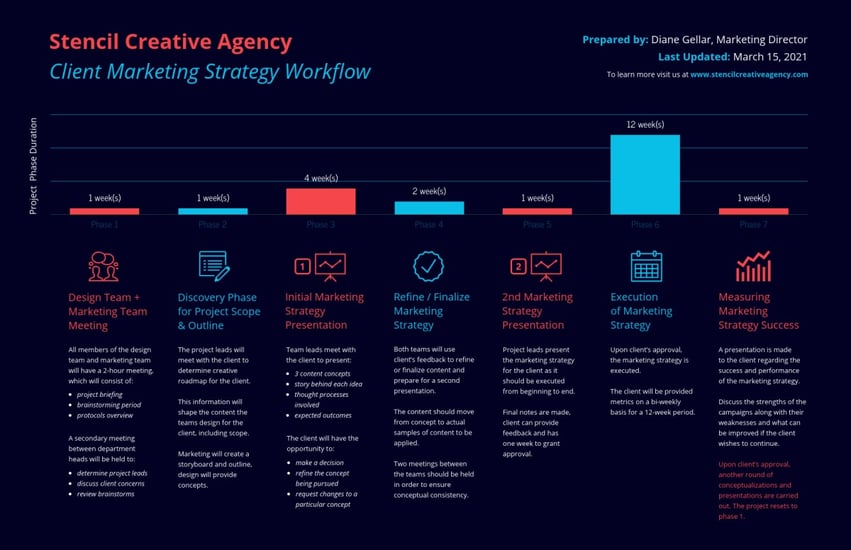
Source: Venngage
4. Use slide decks to summarize meetings
Every meeting attendee should leave the meeting with an action plan or a clear understanding of the next steps. That’s the only way to run productive and effective meetings that generate quality results.
While you can have a team member send out memo-like minutes of the meeting, it’s not the best solution because they're too text-heavy.
A better option that would guarantee more engagement and alignment is summarizing meetings in the form of visually appealing slide decks. This helps reinforce the points that were discussed, outlines the next steps, and serves as a reference document for the team.
Here’s an example of a slide deck template you can use to share minutes of the meeting. It visually communicates all the necessary information without overwhelming the reader.
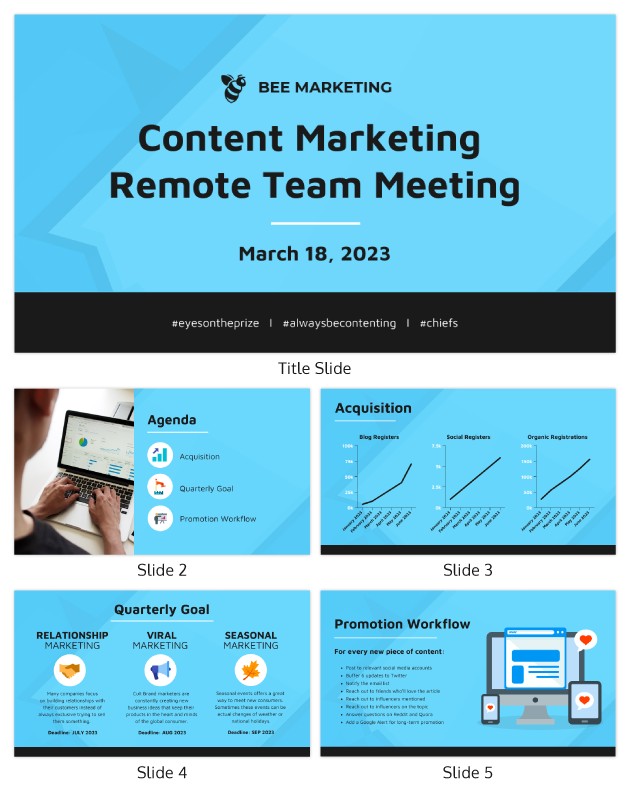
Source: Venngage
5. Create engaging onboarding documents
It’s always advisable to maintain onboarding and training documents. Apart from streamlining the onboarding process, it also helps new employees feel comfortable and become familiar with the company.
Instead of creating text-heavy and boring onboarding documents that are likely to overwhelm readers, consider creating engaging ones with the help of symbols, stylized icons, and illustrations.
For instance, here’s a fun onboarding FAQ for new employees. It immediately captures attention and gets people to read it while providing all the necessary information.
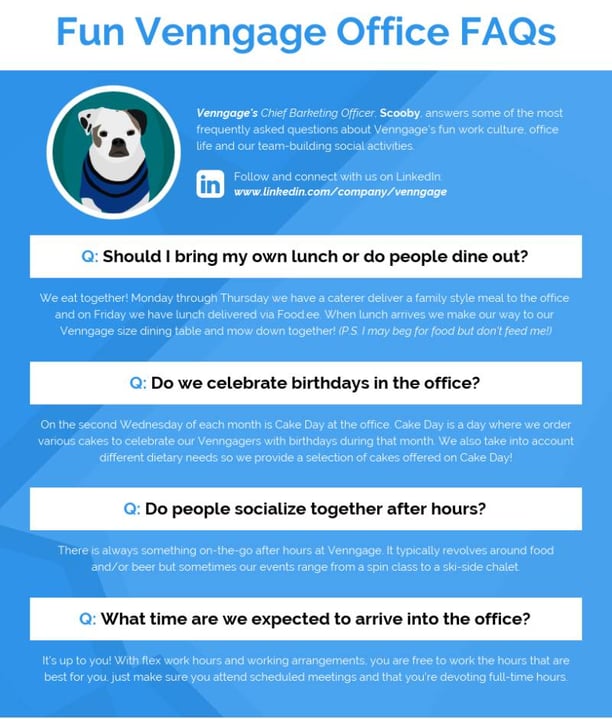 Source: Venngage
Source: Venngage
The takeaway: encourage visual communication in the workplace
Considering the change in workplace dynamics and the move towards remote work, leaders can’t afford to rely on verbal and text communication for presenting information to their team.
It’s incredibly important for companies across industries and sizes to encourage visual communication in the workplace, thereby leading to an improved alignment and team collaboration.
These visual tactics will help you make boring topics more engaging, and enhance workplace communication.
Guest Author
Simki Dutta is a content marketer at Venngage. She writes about all things marketing and communications.



